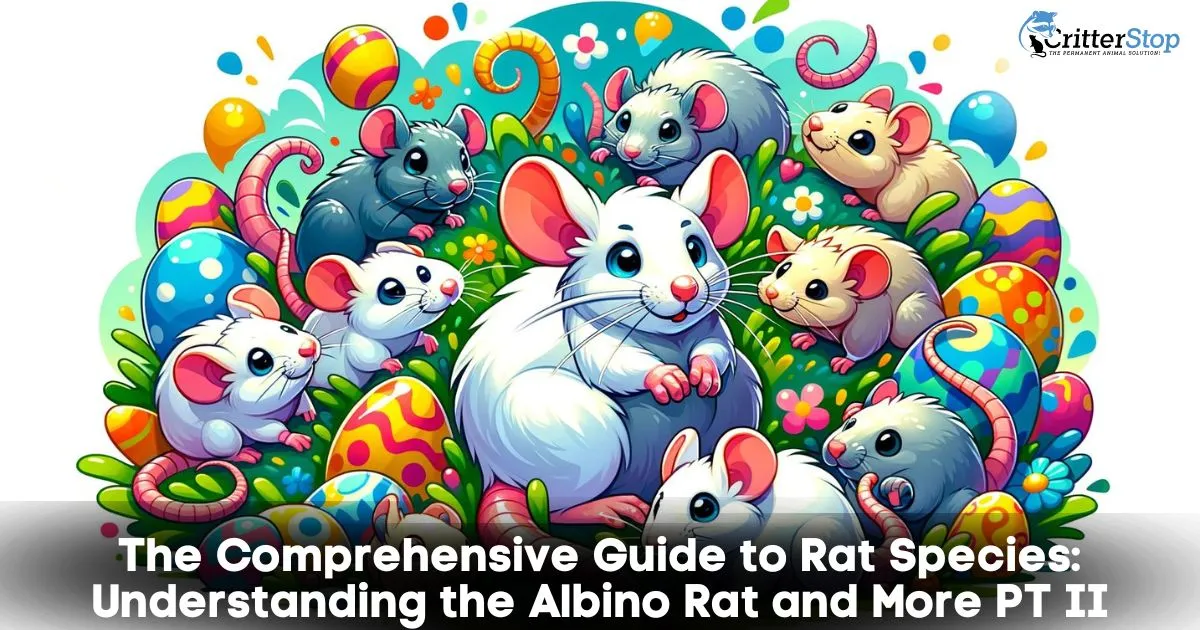
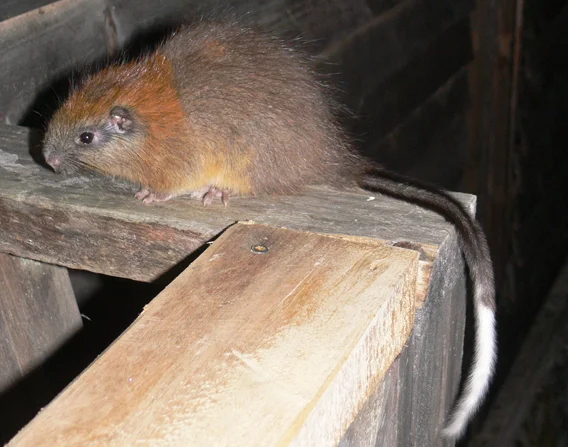
The Red Rat is an intriguing species distinguished by its striking reddish fur. These rats are typically found in forested or shrubland areas, where their unique coloring helps them blend into their natural environment.
Red rats are medium-sized rodents with a slender build, characterized by their distinctive red or rust-colored coats. This vibrant fur sets them apart from other rat species and serves as a form of camouflage among the foliage and branches of their arboreal habitats. Their bodies are well-adapted for climbing, with strong, agile limbs and sharp claws that enable them to navigate trees and shrubs with ease.
The diet of red rats is diverse and reflects the resources available in their forested and shrubland habitats. They primarily consume fruits and berries, which provide essential vitamins and sugars for energy. Seeds are also a significant part of their diet, offering a rich source of nutrients and energy. Additionally, they may eat small animals, such as insects and other invertebrates, which provide necessary proteins. This varied diet ensures that red rats receive a balanced intake of nutrients, crucial for their overall health and vitality.
Red rats are arboreal creatures, meaning they spend most of their time in trees and shrubs. Their agile climbing abilities allow them to move swiftly and efficiently through the canopy, where they search for food and shelter. This arboreal lifestyle helps them avoid many ground-based predators and take advantage of the abundant food sources available in the treetops.
The Marsh Rat (Rattus lutreolus) is a species well-adapted to life in marshy areas. These rats are commonly found in wetlands, where their unique adaptations help them thrive in such environments.
Marsh rats are small to medium-sized rodents, with brownish fur that helps them blend into their marshy surroundings. They have a short tail compared to other rat species, which aids in their maneuverability in dense vegetation and aquatic environments. Their fur is often coarse and water-resistant, providing some protection against the damp conditions of their habitat.
The diet of marsh rats is varied and consists primarily of aquatic plants, which they find in abundance in their marshy habitats. They also consume insects and small fish, adding protein to their diet. This diverse diet ensures they receive a balanced intake of nutrients necessary for their survival and reproduction. Their ability to exploit a variety of food sources is a key factor in their adaptability to wetland environments.
Marsh rats are excellent swimmers, a crucial skill for navigating the waterlogged areas they inhabit. They build their nests in marsh vegetation, creating shelters that are often elevated to avoid flooding. These nests are constructed from grasses, reeds, and other plant materials found in their environment, providing both camouflage and protection from predators.
The Piebald Rat is a domesticated rat known for its distinctive and attractive coat pattern. These rats are commonly kept as pets, cherished for their unique appearance and friendly nature.
Piebald rats are medium-sized rodents characterized by their striking coat pattern, which features patches of white and other colors, such as black, brown, or gray. This piebald pattern is the result of selective breeding, aimed at enhancing their aesthetic appeal. Piebald rats have a smooth and glossy fur texture, and their friendly demeanor makes them popular pets. They are known for their gentle and sociable nature, making them great companions for individuals and families alike.
The diet of piebald rats is similar to that of other domesticated rats. They thrive on a balanced diet that includes commercial rat food, which provides essential nutrients. Fresh fruits and vegetables should be regularly included to ensure they receive a variety of vitamins and minerals. Occasionally, they can be given protein sources such as cooked eggs or small pieces of meat, but these should be offered in moderation. Providing a varied and balanced diet is crucial for maintaining their health and well-being.
Piebald rats are highly social animals that thrive on interaction with both humans and other rats. They enjoy being handled and are known to form strong bonds with their owners. Their intelligence makes them quick learners, and they can be trained to perform simple tricks and tasks. Piebald rats are also very playful and require mental stimulation and physical activity to prevent boredom. Providing them with toys, tunnels, and opportunities for exploration is essential for keeping them engaged and happy.
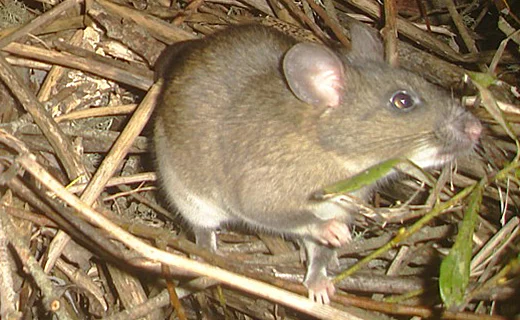
The Dusky Rat is a small, elusive rodent species known for its dark fur and preference for dense, forested habitats. These rats are typically found in areas with thick undergrowth, where they can easily hide and forage.
Dusky rats are small and slender, with fur that ranges in color from dusky gray to black. Their dark coloring provides excellent camouflage in the shadowy, dense vegetation of their preferred habitats. They have a streamlined body that allows them to navigate through tight spaces and thick underbrush efficiently. Their small size and subtle appearance make them difficult to spot in the wild.
The diet of dusky rats is varied and consists primarily of seeds, fruits, and insects. They rely on seeds and fruits for the bulk of their nutritional needs, while insects provide essential proteins. This varied diet helps them maintain a balanced intake of nutrients, which is crucial for their survival and reproductive success. Their foraging habits are well-adapted to the availability of food in their dense, forested environments.
Dusky rats are nocturnal and solitary creatures. They are most active during the night, which helps them avoid many predators and take advantage of the cover of darkness for foraging. During the day, they remain hidden in dense undergrowth or in burrows they have created. This nocturnal lifestyle is a key survival strategy in their natural habitat.
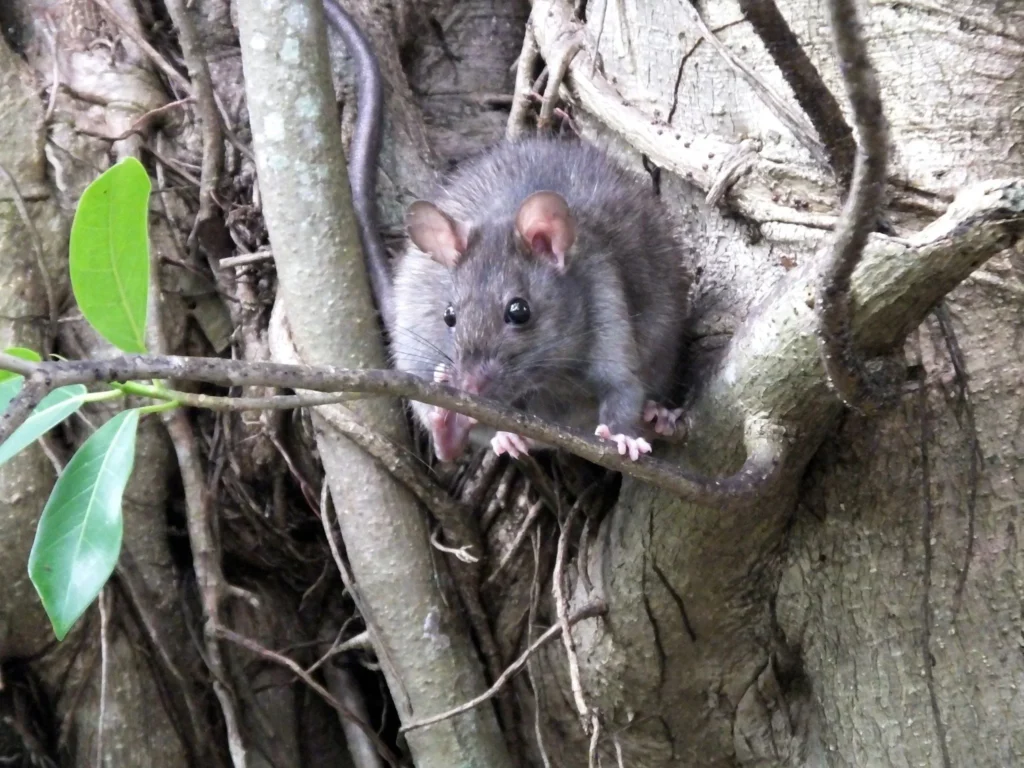
The Palmetto Rat is a rodent species specifically adapted to live in palmetto habitats, commonly found in coastal regions. These rats are well-suited to their unique environment, making them an interesting subject of study.
Palmetto rats are small to medium-sized rodents with brown fur that blends seamlessly with the palmetto fronds and other vegetation in their habitat. They have long tails, which aid in balance and climbing. Their fur is typically coarse, providing some protection against the elements. Their size and agility make them adept at navigating the dense foliage of palmetto habitats.
The diet of palmetto rats is diverse, reflecting the resources available in their coastal environments. They primarily consume seeds and berries, which are abundant in palmetto groves. Additionally, they eat small insects, adding protein to their diet. This varied diet ensures they get the necessary nutrients for survival and reproduction. Their foraging habits are well-adapted to the seasonal availability of food in their habitat.
Palmetto rats are nocturnal, meaning they are most active during the night. This nocturnality helps them avoid many daytime predators and take advantage of the cooler temperatures in their often warm habitats. They are also arboreal, spending much of their time in trees and shrubs. They build nests in palmetto fronds, using the dense foliage for both shelter and concealment from predators.
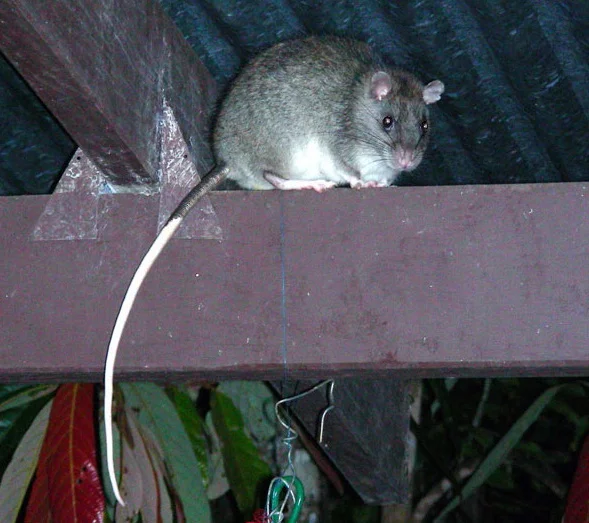
The White-Tailed Rat is a distinctive rodent species, easily identified by the unique white tip on its tail. These rats are found in a variety of habitats, including forests and scrublands, and have adapted well to their environments.
White-tailed rats are medium-sized rodents with robust bodies. Their fur is generally gray, providing camouflage in their natural habitats, but the most notable feature is the white tip on their tail, which distinguishes them from other rat species. This coloration can help in communication and recognition among their kind. Their strong build aids in digging burrows and defending their territory.
The diet of white-tailed rats is diverse, reflecting their adaptability to different environments. They primarily consume grains, which provide a rich source of carbohydrates and energy. Fruits are also an essential part of their diet, offering vitamins and hydration. Additionally, they eat small animals, such as insects and other invertebrates, to gain necessary proteins. This varied diet helps them maintain a balanced intake of nutrients essential for their survival and reproductive success.
White-tailed rats are nocturnal, being most active during the night. This nocturnality allows them to avoid many predators and take advantage of the cover of darkness for foraging. They are solitary creatures, preferring to live alone rather than in groups. Their solitary nature is coupled with a highly territorial behavior; they aggressively defend their burrows and surrounding areas from intruders.
The term Rat White often refers to albino rats or those with predominantly white fur. These rats are commonly domesticated and found in laboratory settings or as pets, valued for their distinctive appearance and friendly nature.
White rats are medium-sized rodents with smooth, white fur. Albino varieties are particularly notable for their pink or red eyes, which result from a lack of pigmentation. This distinctive coloration makes them easily recognizable. These rats are generally friendly and have a calm demeanor, making them popular as pets and suitable for laboratory research due to their docile nature and ease of handling.
The diet of white rats is carefully managed to ensure they receive all necessary nutrients. They primarily consume commercial rat food, which is specially formulated to meet their dietary needs. Fresh produce, such as fruits and vegetables, is also included to provide essential vitamins and minerals. Occasionally, they can be given treats like nuts or small pieces of cooked meat, but these should be offered in moderation to prevent obesity and other health issues. A balanced diet is crucial for maintaining their health and vitality.
White rats are highly social animals that thrive in groups. They enjoy the company of their own kind and can become lonely and stressed if kept alone. They are known for their intelligence and curiosity, which means they require mental stimulation and physical activity to stay happy and healthy. Interactive activities, such as playing with toys, exploring new environments, and learning simple tricks, are beneficial for their well-being.
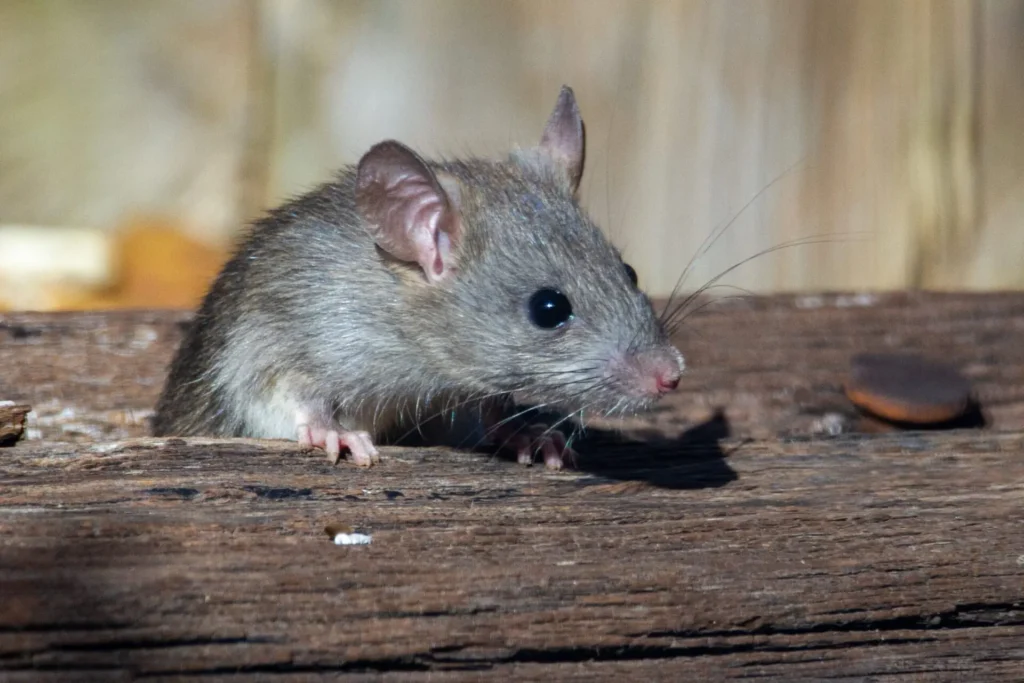
The term Gray Rat can refer to several species of rats with gray fur, including the Roof Rat (Rattus rattus) and the Brown Rat (Rattus norvegicus). These rats are commonly found in various environments, often thriving in urban and suburban areas due to their adaptability.
Gray rats are characterized by their gray fur and slender build. Their size can vary depending on the specific species. Roof rats, for example, are typically smaller and more agile, with sleek bodies that are well-suited for climbing. In contrast, brown rats are larger and more robust. Despite these differences, both types of gray rats share a common adaptability that allows them to thrive in diverse environments.
Gray rats are omnivorous, meaning they have a highly varied diet. They consume grains, fruits, vegetables, and small animals, which includes insects and other invertebrates. Their omnivorous diet enables them to take advantage of a wide range of food sources, making them particularly successful in both natural and human-modified environments. They are also known to scavenge human food sources, such as garbage and pet food, which further supports their survival in urban and suburban areas.
Gray rats are highly adaptable animals, capable of living in various environments, from rural fields and forests to densely populated urban areas. This adaptability is one of their key survival traits. They are social creatures, often living in colonies with complex social structures. This social behavior helps them cooperate in finding food and defending their territory.
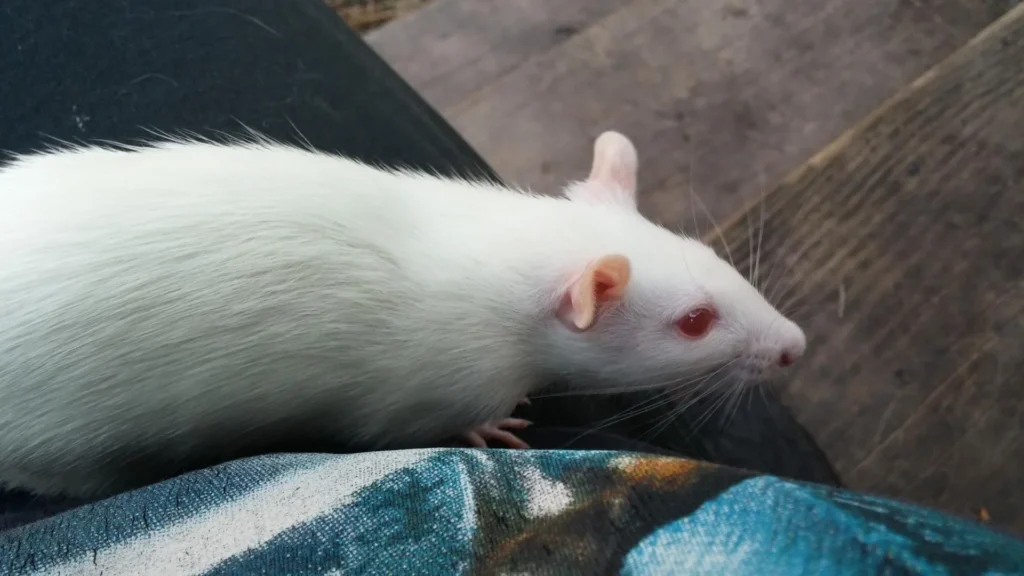
The White Albino Rat is a specific type of albino rat known for its entirely white fur. These rats are commonly domesticated and found in laboratory settings or kept as pets due to their gentle nature and distinctive appearance.
White albino rats are medium-sized rodents with smooth, white fur that lacks any pigmentation. This absence of color is due to a genetic mutation that also results in their characteristic red or pink eyes. These rats are known for their gentle and docile nature, making them popular in both scientific research and as companion animals. Their calm demeanor and ease of handling contribute to their widespread use in various settings.
The diet of white albino rats is similar to that of other domesticated rats and needs to be balanced to ensure their health. They primarily consume grains, which provide essential carbohydrates and energy. Fresh fruits and vegetables are also important components of their diet, supplying necessary vitamins and minerals. Additionally, protein sources such as insects, eggs, or specially formulated rat food should be included to support their overall health and growth. This varied diet helps maintain their vitality and well-being.
White albino rats are highly social animals that thrive on interaction with both humans and other rats. They enjoy being handled and can form strong bonds with their caregivers, often showing affectionate behaviors. Their intelligence makes them quick learners, capable of performing simple tricks and tasks. Mental stimulation is crucial for these rats, as they enjoy exploring new environments, solving puzzles, and playing with toys.
The Chinchilla Rat (Abrocoma spp.) is a unique and appealing pet, known for its soft, chinchilla-like fur. These rats originate from the Andean region of South America and have become increasingly popular as pets due to their gentle nature and distinctive appearance.
Chinchilla rats are medium-sized rodents, distinguished by their exceptionally soft and dense fur, which is reminiscent of the fur of chinchillas. They also have a bushy tail that adds to their charming appearance. Their fur provides insulation and protection against the cooler climates of their native Andean habitat. These rats are gentle by nature, making them excellent companions for pet owners who appreciate a calm and manageable pet.
The diet of chinchilla rats should be well-balanced to ensure their health and longevity. They thrive on commercial rodent food, which is formulated to meet their nutritional needs. Fresh vegetables are an important part of their diet, providing essential vitamins and minerals. Occasionally, they can be given fruits as treats, but these should be offered in moderation to avoid digestive issues. A diet rich in fiber and low in fat helps maintain their overall health and vitality.
Chinchilla rats are social animals that enjoy interacting with both humans and other rats. They form strong bonds with their owners and can be very affectionate. These rats are nocturnal, meaning they are most active during the night. As such, they require an environment that allows for quiet and rest during the day.
The term Two Legged Rat is often used metaphorically to describe deceitful individuals, but in a literal sense, it can refer to rats with physical deformities, such as missing limbs due to genetic mutations or injuries. These rats, despite their physical challenges, can lead fulfilling lives with proper care.
Two-legged rats have physical deformities that result in missing one or more limbs. These deformities can be caused by genetic mutations or injuries sustained during their lives. Despite these physical challenges, two-legged rats retain the same characteristics as other rats of their species. They are medium-sized rodents with fur that can vary in color, depending on their specific breed. Their ability to adapt to their condition showcases their resilience and determination.
The diet of two-legged rats is similar to that of other domesticated rats. They require a balanced diet that includes commercial rat food, which provides essential nutrients. Fresh produce, such as fruits and vegetables, is important for their health, supplying vitamins and minerals. Protein sources, such as insects or small amounts of cooked meat, should also be included to ensure a well-rounded diet. Providing a variety of foods helps maintain their health and energy levels.
Two-legged rats are remarkably adaptable and can live normal lives with the right care and environment. They are social animals that enjoy interaction with other rats and humans. Their intelligence and curiosity mean they require mental stimulation and physical activity to stay happy and healthy. Even with their physical limitations, two-legged rats can learn to navigate their environment, use their remaining limbs effectively, and engage in play and exploration.
The term Ugly Skinny Rat is subjective and generally refers to rats that appear malnourished or sick. These rats often suffer from poor health and require immediate attention and care to restore their well-being.
Ugly skinny rats are typically characterized by their gaunt appearance and visible ribs, indicating malnutrition or illness. Their fur may be patchy or dull, and they might exhibit lethargy and weakness. This condition can result from a variety of factors, including inadequate diet, illness, or poor living conditions. Despite their current state, with proper care, these rats have the potential to regain their health and vitality.
The diet of malnourished or sick rats should be carefully managed to help them recover. High-quality commercial rat food should form the basis of their diet, providing essential nutrients and balanced nutrition. Fresh produce, such as fruits and vegetables, should be included to supply vitamins and minerals. Additionally, protein sources, like cooked eggs or small amounts of lean meat, are crucial for rebuilding their strength and supporting overall health. Regular, small meals can help gradually restore their weight and energy levels.
With proper care and nutrition, ugly skinny rats can recover and exhibit normal social and intelligent behaviors typical of healthy rats. They are social animals that thrive on interaction with other rats and humans. Providing a safe, clean, and enriched environment is essential for their recovery. This includes comfortable bedding, opportunities for exploration and play, and regular social interaction to stimulate their minds and prevent stress.
The White Big Rat can refer to large albino rats or white-furred rats of substantial size. These rats are notable for their impressive size and striking appearance, often kept as pets or in laboratory settings due to their distinctive characteristics.
White big rats are distinguished by their large size and white fur. They may be albino, characterized by pink or red eyes due to the lack of pigmentation. Their fur is smooth and glossy, enhancing their unique and eye-catching appearance. These rats are generally larger than the average domesticated rat, making them stand out. Despite their size, they are known for their gentle and friendly nature, which makes them popular among pet owners.
The diet of white big rats should be well-balanced to support their larger size and nutritional needs. They thrive on high-quality commercial rat food, which provides essential nutrients for their health. Fresh produce, including fruits and vegetables, is crucial for supplying vitamins and minerals. Occasionally, they can be given treats such as nuts or small pieces of cooked meat, but these should be offered in moderation to prevent obesity and other health issues. Ensuring a balanced diet helps maintain their vitality and overall well-being.
White big rats are highly social animals that enjoy interaction with both humans and other rats. They thrive in environments where they can engage in social activities, such as grooming, playing, and exploring with cage mates. Their intelligence makes them quick learners, capable of performing tricks and solving puzzles. Mental and physical stimulation is essential to keep them engaged and prevent boredom. Providing toys, tunnels, and opportunities for exploration can help meet their need for activity and enrichment.
Rats can pose significant health risks and cause extensive property damage. Whether you're dealing with an infestation of albino rats, roof rats, brown rats, or any other species, Critter Stop is here to help. Our experienced team provides humane and effective rat removal services in the DFW area.
Call Critter Stop at (214) 234-2616 today to protect your home and ensure a rat-free environment. We are your best option for professional pest control.
Visit our Critter Library and learn more about our furry friends